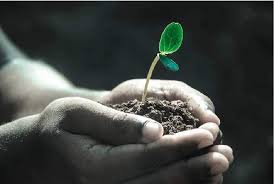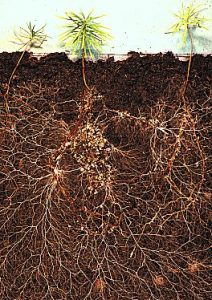 The Yogabliss, Your Heart Life on-line Moving into Meditation classes met this morning. We reflected on the seeds of possibility that we carry. We took an imaginary journey in which we planted and tended our “heart-seeds.” These are seeds that spring from caring, gratitude, hope or love. We imagined where the seed was planted and how it flourished and grew to nurture other lives. You don’t always know how your heart’s seeds will land. So we bow and try to keep growing.
The Yogabliss, Your Heart Life on-line Moving into Meditation classes met this morning. We reflected on the seeds of possibility that we carry. We took an imaginary journey in which we planted and tended our “heart-seeds.” These are seeds that spring from caring, gratitude, hope or love. We imagined where the seed was planted and how it flourished and grew to nurture other lives. You don’t always know how your heart’s seeds will land. So we bow and try to keep growing.
We heard Pat Brisson’s poem, The Cleverness of Seeds. Among her other writing pursuits, Pat “coordinates Project Storybook, a program at Edna Mahan Correctional Facility for Women in Clinton, NJ, which allows incarcerated mothers to select, record and mail books and CDs to their children.”
We explored naturalist and educator, Yuval Ave’s article, Towards a Curriculum for ‘Belonging’. You can find this beautifully illustrated article at Compassion Contagion’s web-site. Their work focuses on “the rise of ordinary active citizens across the country and their everyday acts of resilience and compassion.” You can also follow Yuval’s wonderful photographs and writings on his Instagram Naturalist’s Column.
We ended with poet Rev. Margaret Anne Ernst’s Planting Instructions. You can find more of her writing at her blog, Planted More Deeply. I really enjoyed her latest poem, How to Be a Good Citizen of the 21st Century – of course it involves planting seeds.
Take a few deep, slow breaths. Feel the places where your body touches Earth’s body. You can tune into her qualities of steadiness and support. You can explore a sense of rootedness. Visualize how deep, how wide you find connections. Imagine the interplay of mycelial fibers connecting your body to other bodies. Begin to experience inter-being. You can reflect on your ancestral roots: the human and more than human beings that brought you into being over the long passage of time. Each generation carries, plants and tends the seeds of the future, the seeds of possibility.
You can reflect on a seed you may carry. Perhaps it is a seed born of caring, gratitude, hope or love. If nothing comes to you, let that be o.k. You can invite the seed to make itself known to our heart in its natural time. You can imagine the place you will be planting this seed: a fertile garden, a field, a forest floor, a pot in your home, a place in your heart. You can acknowledge this place with gratitude. When you’re ready, consider what preparation might be needed for planting. You might begin by asking permission, removing any obstacles, or asking for help. Relax and feel aliveness.
 When you’re ready to plant the seed remember its essence: caring, gratitude, love or something else you feel in your heart. Imagine you are holding the seed and tune into the possibility it carries. What wants to emerge from this seed, as an extension of your heart? Plant the seed. Imagine it germinating with light and water, growing roots and branches, leaves and flowers and soon more seeds so that the cycle may continue. What takes shape? What flourishes? Imagine how and who and what might this growth nourish? In inter-being we flourish and grow in relation to each other.
When you’re ready to plant the seed remember its essence: caring, gratitude, love or something else you feel in your heart. Imagine you are holding the seed and tune into the possibility it carries. What wants to emerge from this seed, as an extension of your heart? Plant the seed. Imagine it germinating with light and water, growing roots and branches, leaves and flowers and soon more seeds so that the cycle may continue. What takes shape? What flourishes? Imagine how and who and what might this growth nourish? In inter-being we flourish and grow in relation to each other.
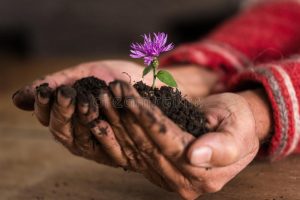 On this journey we carry, plant and tend sacred seeds of possibility. The seed’s essence is its magic. The magic is conjured by all relations. All relations bring forth new life. As poet Pat Brisson describes in her poem The Cleverness of Seeds:
On this journey we carry, plant and tend sacred seeds of possibility. The seed’s essence is its magic. The magic is conjured by all relations. All relations bring forth new life. As poet Pat Brisson describes in her poem The Cleverness of Seeds:
The way the maple seed twirls away
from its tree and finds
any available crack or crevice to slip itself into
and how the dandelion fluff is wished by children out along the wind
to a new starting place
and how the burdock burr rides the fur or feather or pant leg of its unwitting assistant
to get to where it wants to grow
and how cherry and apple and juniper
allow themselves to be eaten alive
and eventually dumped on new fertile ground
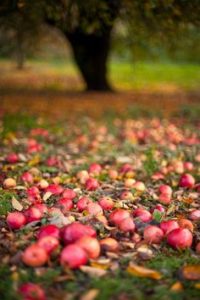 how some seeds, bold and defiant,
how some seeds, bold and defiant,
pop off right into the face
of anyone who tries to uproot their plant
and how some seeds float
down rivers to oceans
and are washed up on other shores
or others are rounded up and kept in deep dark holes and sometimes even forgotten there
until one day they start to grow
lying in wait for the rain
leaning into sunshine or managing in shade
cultivated or wild appreciated or despised
alone
or in fields of their kind
they grow.
Our clever seeds are met by the living world ready to carry them to those new places in which to grow. Some seeds lie dormant while we work on tending our hearts. Heart-senses find their way: cultivated or wild, alone or in fields of their kind. They grow.
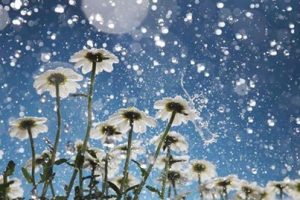 Sense the pulse of life. The great pulse of life of which we are a part. Like the clever seeds, we can relax and recognize that many forces are carrying us along. In this calm, regenerative space, we can allow creative responses to the world to flourish and grow. We can reflect on what we love about Earth, humans and more than humans. This love frees our imagination: our heart’s seeds of possibility.
Sense the pulse of life. The great pulse of life of which we are a part. Like the clever seeds, we can relax and recognize that many forces are carrying us along. In this calm, regenerative space, we can allow creative responses to the world to flourish and grow. We can reflect on what we love about Earth, humans and more than humans. This love frees our imagination: our heart’s seeds of possibility.
In his article, Towards a Curriculum for ‘Belonging,’ naturalist and teacher Yuvan Aves writes:
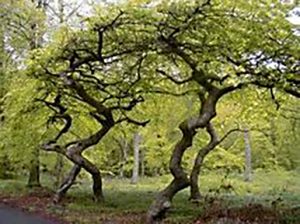 Evolutionarily speaking, our bodies are forests, are wildernesses. Billions of years ago the ancestors of our living cells decided to live together as community so that they could survive better, express better, do more. Our identities arise from a murmuration of cellular and microbial living entities who have decided in deep-time to live as a community. This is a biological truth.
Evolutionarily speaking, our bodies are forests, are wildernesses. Billions of years ago the ancestors of our living cells decided to live together as community so that they could survive better, express better, do more. Our identities arise from a murmuration of cellular and microbial living entities who have decided in deep-time to live as a community. This is a biological truth.
We live in deep time, the time that came before and moves beyond us. Our identities arise from the quiet murmurs of living entities as a community. What can this truth teach us? Perhaps we learn by listening to our heart’s wisdom. Perhaps we learn by freeing our creative imagination: playing, singing and dreaming an Earth that is healed and whole. Yuval observes that:
Learning from these many ‘reimaginings’ can expand the spaces of learnings and work we create – integrating our heads, hands, and hearts. What social constructs would this reimagining shift? What would be the ones we’d have to shed and let go, to learn to belong and live as inhabitants? These are the significant questions we need to ask ourselves, [o]n the journey . . .
 We are the dreamers. What are you dreaming? However big or small, when we move forward, we move out of anxiety’s numbness. We plant and tend heart-inspired seeds of possibility. We can begin simply. We choose one way to contribute to Earth’s regeneration, sustainability and collective social justice. These are big words that can be enlivened in small steps. We can re-imagine our homes and lifestyles; our places of work and community.
We are the dreamers. What are you dreaming? However big or small, when we move forward, we move out of anxiety’s numbness. We plant and tend heart-inspired seeds of possibility. We can begin simply. We choose one way to contribute to Earth’s regeneration, sustainability and collective social justice. These are big words that can be enlivened in small steps. We can re-imagine our homes and lifestyles; our places of work and community.
Here are poet Rev. Margaret Anne Ernst’s planting instructions:
Tell me what you’ll turn into a garden
when things get hard.
Tell me which abandoned salt mine
you’ll turn into a wild bed of roses
laced with dancing gooseberries,
covered in wasteful morning dew.
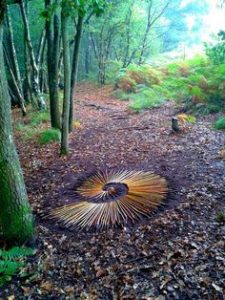 Tell me what bathtub,
Tell me what bathtub,
which plastic children’s chair,
which side table you’ll lift
from the rubble of fallen walls
to place in a garden you’ll build
on your block after the tornado strikes,
which public square you’ll cover
with root vegetables in lean times.
Tell me where you’ll hide the string beans
in your hair, which hidden jeans pocket
you’ll sew into a planter for chamomile
to grow for when it’s needed.
Tell me which government building
you’ll erect an orchard in,
lining pear trees down the hall
where city planners rake their monetary dreams.
Tell me what plants you’ll place
into the moist earth of statue bases
that used to house generals
and conquistadors.
Tell me which abandoned memory
you will plant with sunflowers
to attract pollinators and detox
the contaminated ground.
 Tell me which wildflowers you’ll plant
Tell me which wildflowers you’ll plant
on the bridge of your nose
in a lattice between your eyes
until all you see is beauty.
Tell me what seeds you’ll sow
in a dotted line in the path
between you and the person
you last hurt,
enough space between each
to breathe and make shade
for beetles and crickets
to cool underneath.
Tell me how you’ll pick mushrooms
grown over your grandmother’s grave
that have remediated the top layer
of earth that covers her ashes.
Tell me which journal entries
and New Year’s resolutions
or stories of self-contempt
you’ll use in the compost
for a patch of tomatoes
that will catch the sun in July,
where you’ll gently teach your granddaughter
how to take from the earth.
 Tell me what fruit will grow on your tongue
Tell me what fruit will grow on your tongue
when you say what you have needed to say
all this time. When you don’t hold back.
When you live into your vegetable nature.
When you become the soil
for a new world.

